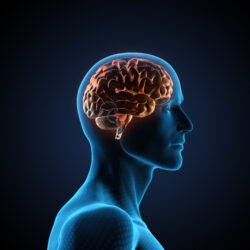Healing the Brain in Addiction Recovery: The Key to Lasting Change

Addiction isn’t just a habit; it’s a complex disease that profoundly affects the brain’s structure and function. Over time, the brain’s pathways are rewired, creating patterns that reinforce substance use and make recovery challenging. Understanding the science behind addiction and the brain can shed light on why healing the brain is a crucial step in overcoming addiction. This process involves reversing harmful changes and nurturing new, healthy neural connections. But how does addiction affect the brain? And what does proper brain recovery look like?
How Addiction Affects the Brain
The brain’s reward system is central to our ability to experience pleasure and motivation. This system, primarily involving neurotransmitters like dopamine, encourages us to seek out essential behaviors for survival, like eating and socializing. However, addictive substances hijack this reward system, releasing massive amounts of dopamine, which creates powerful euphoria. Over time, the brain begins to rely on these substances to release dopamine, weakening its natural ability to feel pleasure from regular activities.
As addiction progresses, the brain adapts by reducing dopamine receptors, leading to a diminished sense of reward in everyday life. This is one reason why individuals struggling with addiction often experience apathy and difficulty finding joy in previously fulfilling activities. The neural pathways become focused on obtaining and using the addictive substance, reinforcing patterns that make quitting challenging.
In addition to the reward system, addiction also impacts regions of the brain associated with decision-making, self-control and emotional regulation. This explains why someone might continue using a substance even when they know it’s harmful. Fortunately, brain recovery after addiction is possible with time and the right approach, but it requires targeted treatment and support.
Healing the Brain in Addiction Recovery
Healing the brain after addiction is a gradual process that involves both physical and psychological changes. Recovery isn’t just about stopping the substance; it’s about reshaping the brain’s function to promote healthy behaviors and emotions. Here are some essential ways the brain heals during recovery:
1. Re-establishing Natural Dopamine Levels:
One of the primary goals of recovery is to restore the brain’s natural dopamine production. Without the “high” from substances, the brain has to relearn how to release dopamine in response to healthy behaviors. Exercise, proper nutrition and positive social interactions can help jumpstart the brain’s dopamine system, creating new pathways for pleasure and motivation.
2. Strengthening Neural Connections:
Long-term substance use weakens the connections in parts of the brain responsible for decision-making and impulse control. Engaging in therapeutic activities like cognitive-behavioral therapy (CBT), mindfulness and meditation helps to strengthen these connections, improving self-control and resilience against cravings. Neuroplasticity, the brain’s ability to reorganize itself, is essential in recovery because it allows it to build new, healthy connections that support a substance-free life.
3. Supporting Emotional Regulation:
Many people struggling with addiction have experienced trauma, anxiety or depression. Addiction often serves as a coping mechanism, masking these underlying issues. During recovery, therapeutic interventions can help individuals develop healthier ways to process and regulate emotions. This emotional regulation reduces the likelihood of relapse, as individuals become better equipped to handle stress without turning to substances.
Approaches to Brain Recovery After Addiction
A multifaceted approach is necessary to support brain recovery after addiction, with a combination of physical, psychological and social interventions being the most effective. Here are a few proven methods:
– Medication-Assisted Treatment (MAT): MAT can play an essential role in helping the brain adjust to the absence of addictive substances. Medications like methadone, buprenorphine and naltrexone are often used for individuals recovering from opioid addiction. These medications stabilize the brain’s chemistry and reduce cravings, giving the brain time to heal.
– Therapeutic Interventions: Therapy is a cornerstone of addiction recovery, particularly therapies like CBT, which work to reframe negative thought patterns and build coping skills. These therapies address the emotional and mental health aspects of addiction, enabling the brain to break free from harmful behaviors.
– Exercise and Nutrition: Physical activity stimulates the brain’s production of endorphins, while a balanced diet supports brain function and healing. Both exercise and proper nutrition promote the restoration of healthy dopamine levels and support neural health.
– Mindfulness and Meditation: Mindfulness practice has been shown to increase gray matter density in areas of the brain associated with emotional regulation and self-control. Meditation also reduces stress and promotes a positive mental state, making it a valuable tool for those in recovery.
Time and Patience in Brain Healing
Recovering from addiction is a journey that requires patience and consistency. It takes time for the brain to adjust to life without substances, and relapse can happen along the way. However, every effort to heal is a step in the right direction. Understanding that brain recovery isn’t immediate can help individuals and their support systems set realistic expectations, which can reduce frustration and promote long-term commitment to sobriety.
Just as addiction doesn’t develop overnight, neither does recovery. Initial detox allows the brain to stabilize, but full recovery often involves months or even years of continual effort. Each small success in retraining the brain is a sign of progress, and over time, the brain’s natural state of health and balance can be restored.
Embracing a Healthier, Substance-Free Life
Healing the brain is at the core of recovery. By focusing on addiction and the brain, individuals in recovery are better equipped to understand why they feel the way they do and how their bodies and minds are capable of change. This knowledge can be empowering, providing hope that with persistence, life after addiction can be fulfilling, balanced and joyful.
Ultimately, brain recovery goes beyond the physical aspects; it’s about reclaiming a sense of purpose and connection. When the brain heals, so does the individual, and with time, the drive to live a healthier life overpowers the desire to return to old patterns. With continued support, mindfulness and dedication, individuals in recovery can embrace a new life with confidence and resilience.








